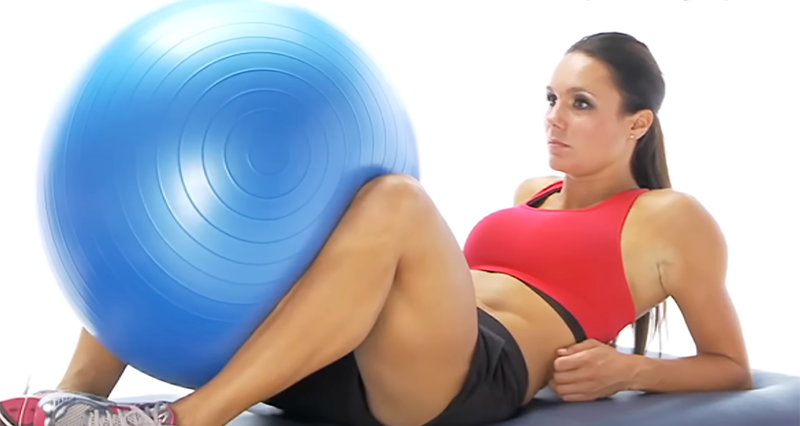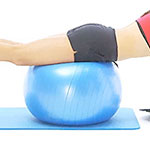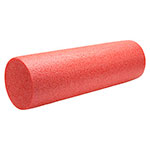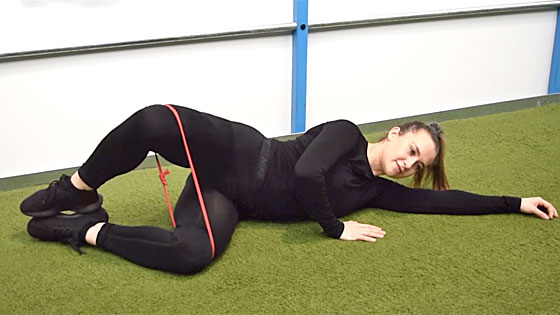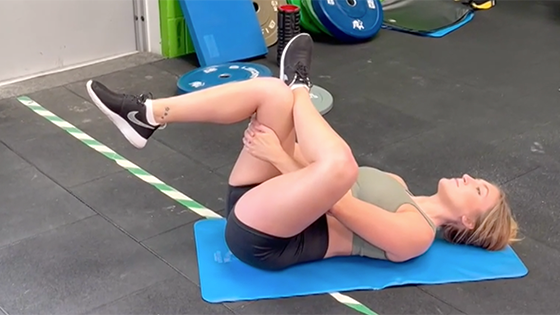Hip exercises for sports injury rehabilitation often include groin exercises. Here we demonstrate early, mid, and late-stage exercises.
The following exercises and stages are for information and to be used only as a guide. We always recommend seeking professional advice before beginning any groin rehabilitation or hip exercises.
Early-stage hip & groin exercises
These exercises are to be done as soon as possible after injury if the pain will allow. The aim is to restore the range of motion without putting any damaged tissues under stress. The exact exercises and how quickly you progress through them will depend on the type and severity of an injury. Active mobility exercises where the athlete physically attempts to move the joint through a range of motion are often the first step.
Isometric Groin Exercises
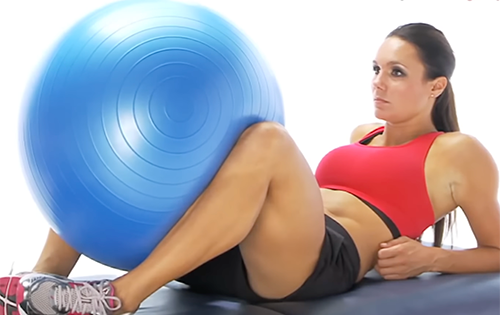
Isometric groin contraction exercises involve a contraction of the inner thigh muscles, without movement of the hip joint. They are a great way of starting to load the groin muscles in the early stages of rehabilitation.
- The athlete lies on their back with a ball (either a small football, medicine ball, or Swiss ball) between their knees.
- They squeeze the thighs into the ball, holding the contraction for a few seconds before resting and repeating.
- Perform this exercise with the feet flat on the floor or with the feet raised and knees at 90 degrees.
Isometric hip abduction exercise
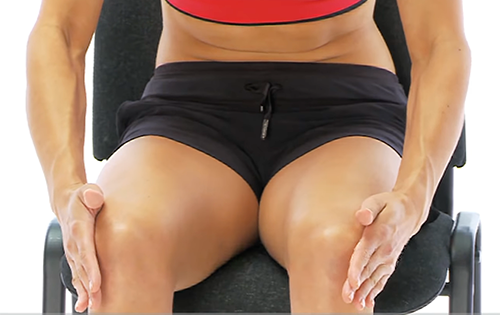
Isometric exercises are muscle contractions without movement (static contractions). Hip abduction means moving the thigh outwards.
- The athlete sits in a chair with their knees bent and feet flat on the floor.
- Place the hands on either side of the outer knees, as shown.
- The athlete then uses their hands to resist as they try to push the knees (thighs) outwards.
- Hold the contraction for 5 to 10 seconds before they relax and then repeat the exercise.
Isometric hip extension
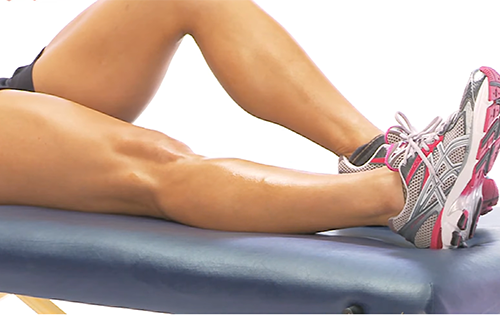
Isometric exercises involve muscle contractions with no movement of the body part (static contractions). Perform the hip extension as shown here to work the buttocks!
- To begin to work the buttock and hamstring muscles, the athlete lies on their back.
- They push the leg down against the surface (floor or table).
- Contract the buttock muscles throughout
Isometric hip flexion exercises
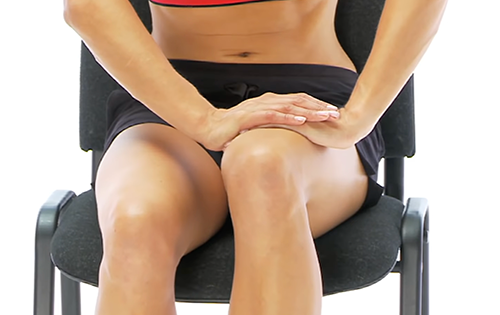
Static contractions are muscle contractions with no movement of the limb, In this case, the hip flexor muscles contract against resistance.
- They use one hand on the lower thigh to provide resistance, as they attempt to lift the leg up
- Avoid using the foot to push off
- Hold for 5 or 6 seconds and gradually release. Repeat 10 times
Straight leg raise
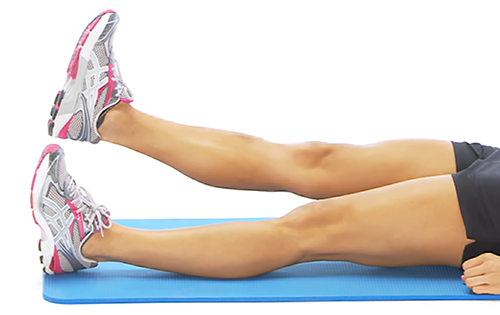
The straight leg raise (SLR) exercise is used in the early to mid-stages of rehabilitation for knee, hip, and thigh injuries. It works the hip flexor muscles.
- The starting point is lying on the back with both legs out straight
- Lift one leg a few inches off the couch/floor
- Keep the knee straight
- Hold the position for 2-5 seconds then lower the leg slowly back to the floor
Hip extension exercise in prone
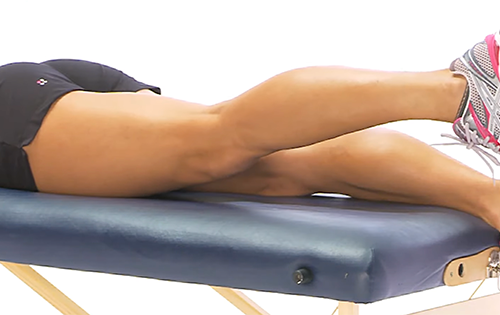
The hip extension in prone exercise may also be known as a reverse straight leg raise. It is a good starting point for strengthening the glute and hamstring muscles.
- To strengthen the hamstrings and buttock muscles the athlete lies on their front and raises the thigh upwards off the couch
- Keep the knee straight throughout
- Slowly lower the leg back down and then repeat
- Contract the buttock muscles to initiate movement
Hip extension on all fours
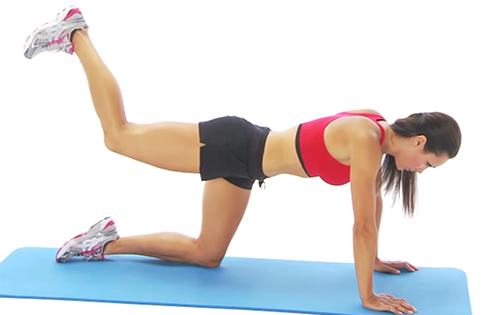
Hip extension exercises such as this work the glute muscles (buttocks) and the hamstrings at the back of the thigh. No weight is added for this early-stage exercise, gravity is used as resistance.
- In an all-fours position, the athlete raises one leg behind them, keeping the knee bent and moving the sole of the foot towards the ceiling.
- Once at the top of the movement, they may hold the position briefly before returning slowly to the starting position.
Hip adduction exercise using gravity
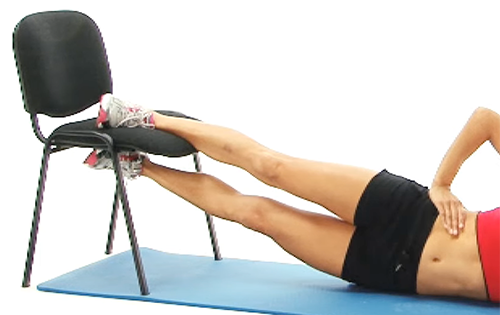
Hip adduction exercises involve moving the thigh inwards across the line of the body. Laying on the side of the leg to be worked means gravity can be used to increase resistance. You can add ankle weights.
- lay on your side with the leg to be worked on at the bottom. This strengthens the groin muscles
- Bend the top leg out of the way as shown
- The athlete lifts the bottom leg as high as is comfortable, keeping the knee straight
Clam exercise
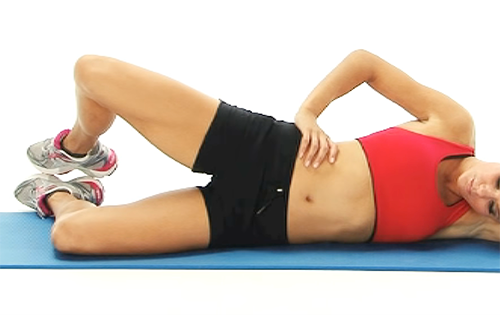
The side-lying clam exercise strengthens hip abductors such as gluteus medius. Commonly used in the rehabilitation of lower back pain and hip injuries.
- Lie on your side.
- Rest your head on your arm or hand as shown.
- Bend the hips to approximately 45 degrees and bend your knees at 90 degrees. Make sure one hip is lying above the other.
- You should now be well aligned- your feet should be in line with your back.
- Float the upper leg upwards while keeping your feet in contact with one another.
- Inhale, and as you the leg down to the starting position.
- Repeat 5- 10 times for each leg.
Mid-Stage hip & groin exercises
During the mid-stage exercises progress to gentle strengthening, gradually increasing the load on the joint and through the recovering tissues. Balance and proprioception training usually begins.
Hip Extension with Band
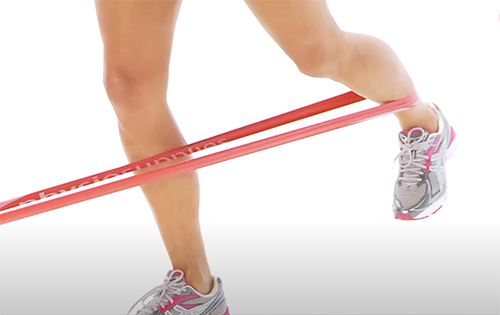
Hip adduction is a movement of bringing the leg across the body. Use a resistance band as shown.
- Stand with the band around one ankle and attached to a fixed point in front.
- Use something to hold onto if you need to.
- Keeping the leg straight extend the hip as far as comfortable and return to the start position.
- Keep the hips square on facing forwards and perform the exercise in a slow and controlled manner.
- You should feel it working the buttock muscles.
Related Injuries
- Hamstring strains.
Eccentric Hip Adduction Exercise
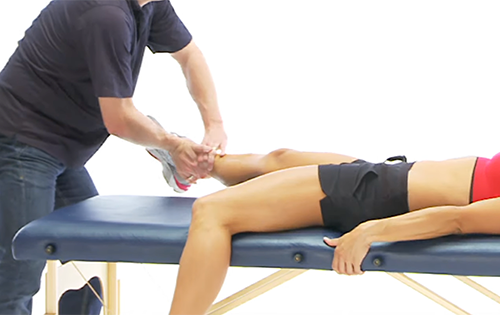
Eccentric exercises focus on strengthening the muscle whilst it lengthens (rather than shortens). This happens to control a movement. So, in this case, a therapist applies force and the patient slows it down.
- Lie on your back and the therapist is at your foot end
- The therapist forcefully moves the leg out to the side and the patient controls and slows down the movement
Hip Adduction with Band
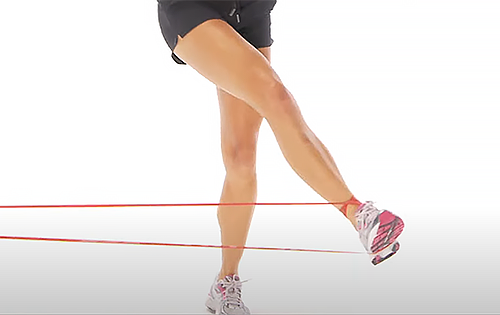
Hip adduction is the movement of bringing the leg across the body. The piriformis muscle is a small muscle located deep in the buttock. It can be troublesome, especially in runners, and can result in nerve compression and sciatica symptoms.
- To strengthen the hip abductors on the outside of the joint, the athlete starts with a resistance band anchored to a doorway or chair leg and wrapped around the ankle
- Take the leg out to the side as far as possible, before slowly returning to the starting position
Bent Leg Hip Flexion With Band
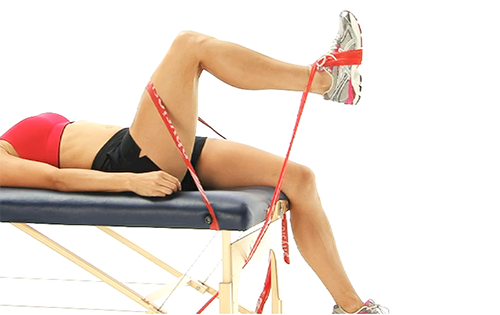
Hip flexion is the movement of bringing the thigh forward. Performing this exercise with the knee bent reduces the input from the quads and uses mainly the Iliopsoas muscle.
- The patient lies on their back with the band wrapped around the thigh and ankle as shown.
- They then pull the knee up towards the body, keeping it slightly bent at all times.
- Slowly return to the start position and repeat.
Bridge Exercise
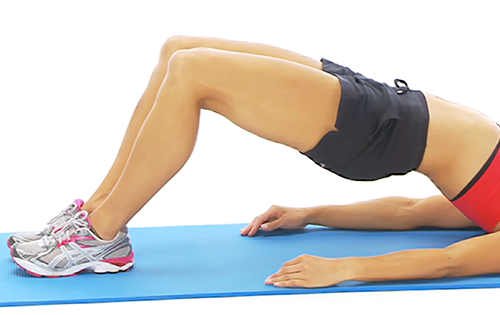
The bridge exercise is a great one for strengthening the bum muscles and the hamstrings. Use this exercise for rehabilitation and also for toning purposes.
- The athlete starts lying on their back with their knees bent and feet flat on the floor
- They tend to raise the buttocks and lower back up off the floor as high as possible
- Ensure to really squeeze the glute muscles
- Hold this position as long as required
- Slowly return to the start position and repeat
Hip Raise

The hip raise exercise (sometimes called a hip drop or hip hitch) is a great one for runners suffering from hip or knee pain. It strengthens the muscles responsible for the level of the hips when standing on one leg.
- Start this exercise sideways on a step with one leg unsupported
- Lower the unsupported leg towards the ground from the hip
- The knees of both legs stay straight throughout
- Drop the foot as low as possible before reversing the movement to list the hip as high as possible
- This works the muscles around the hip on the standing leg
Lateral Hip Rotation with Band
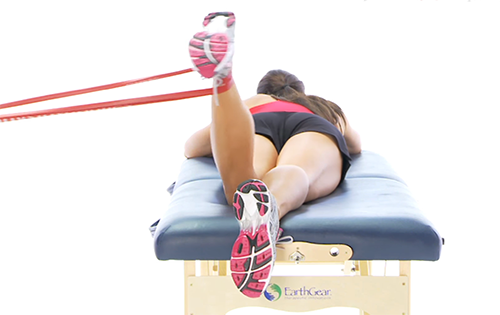
This lateral rotation (external rotation) exercise works the muscles in the bum, called the glutes. It is helpful for people whose knees rotate inwards when running!
- To work the hip rotators in the buttock, the athlete lies on their front with the band wrapped around the ankle as shown and the knee bent.
- Rotate the hip outwards so that the involved ankle moves across the other leg.
Medial Hip Rotation with Band
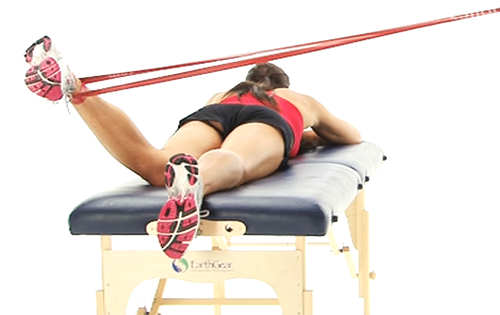
The medial rotators (sometimes called internal rotators) are muscles around the hip that turn the thigh inwards. You can work them by using a resistance band, as shown here.
- To work the hip rotators, the athlete lies on their front, with the band wrapped around the ankle as shown and the knee bent.
- Rotate the hip so that the ankle moves away from the band’s attachment point.
Advanced hip & groin exercises
These hip exercises are more functional, or sport-specific. The aim is to restore full strength and mobility to the hip joint and return the athlete to full training and competition.
Alternate Leg Hip Extension
The alternate leg hip extension exercise is similar to a bridge but a little harder as it alternates weight between single legs.
- Rest the weight between the forearms and heels as shown
- Transfer the weight from one leg to the other
- Raise the alternating leg just off the floor
- Try to keep the pelvis as still as possible throughout
Figure 4 Lift
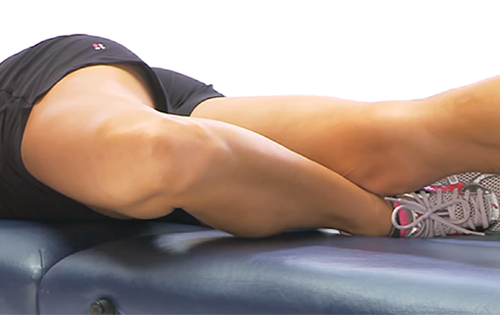
The figure 4 lift exercise works the external hip rotators (sometimes called the lateral hip rotators) which are found in the buttocks.
To strengthen the hip rotators, the athlete lies on their front with the leg to be stretched bent and the ankle under the other thigh.
The athlete then lifts the bent knee as high as possible. Slowly lower the back to the floor/couch, before repeating the exercise.
Good Mornings
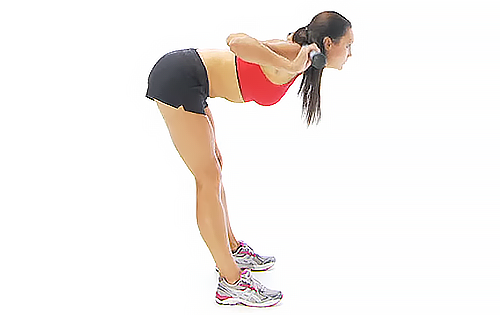
Good mornings are a well-known exercise to strengthen the hip extensor muscles. Be careful with this one if you have a history of any back pain.
- The starting position is a shoulder-width stance, with the bar over the shoulders as shown.
- From here, the athlete bends forwards from the hips, keeping the lower back straight.
- Once parallel to the floor, the movement is reversed to stand upright again.
Walking Abduction with Band
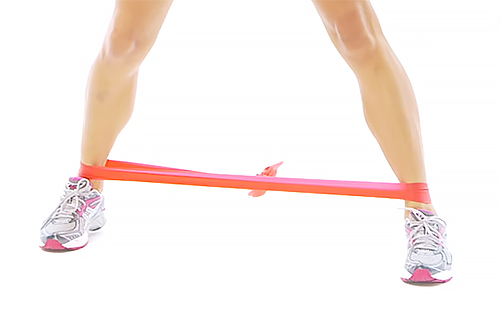
Walking hip abduction is an exercise that uses a resistance band to strengthen the glute muscles and prevent the knees from falling in when running and squatting etc.
- Use a small resistance band and wrap it around both ankles, to work on the hip
stabiliser muscles - Move one leg out to the side, and maintain balance and stability
- Repeat this, walking to both sides as shown.
Wide Leg Squat
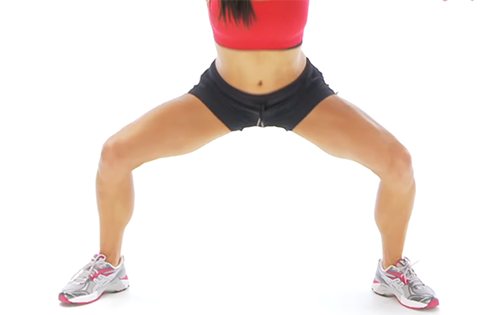
Performing a squat in a wide leg position works the adductor muscles (groin) more than a conventional squat.
- The starting position for a wide-leg squat is with the feet more than shoulder-width apart and the toes pointing outwards.
- From here the athlete bends both knees, keeping their back straight.
- Ideally, the knee should reach a right angle (90 degrees), but if not this is something you can work on.
- Don’t go past a right angle.
- Make sure the knees do not more in front of the toes and keep your weight over the midfoot and heel.
